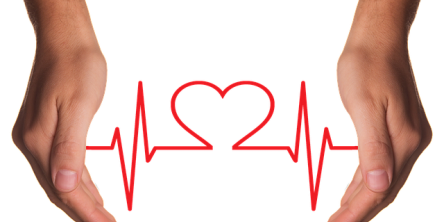Movement Disorders - 8 Things You Have to Know

Conditions like Parkinson's, essential tremor, and dystonia are on the rise, affecting people of all ages and backgrounds. From subtle tremors to major coordination issues, these disorders can greatly affect daily life. Understanding their causes, symptoms, and treatments helps us detect and manage them early, improving overall quality of life.
Definition and Overview
This overview lays the groundwork for a comprehensive understanding of the intricacies that follow, particularly the myriad of abnormal movements associated with these disorders:
Tremors
- Involuntary muscle contractions (Dystonia)
- Irregular, jerky movements (Chorea)
- Abnormal, often repetitive motions (Dyskinesias)
- Freezing of movement (Akinesia)
- Uncontrolled twisting and writhing (Athetosis)
- Rhythmic shaking (Myoclonus)
These signs and symptoms highlight how complex and diverse Movement Disorders can be. They show a range of challenges for the brain and nerves, affecting how a person controls their movements.
Causes and Risk Factors
Understanding the causes and risk factors associated with Movement Disorders is crucial for proactive intervention. Key causes of Movement Disorders include:
- Genetic factors
- Neurodegenerative diseases
- Traumatic brain injury
- Exposure to certain toxins
- Medication side effects
- Metabolic disorders
- Infections affecting the nervous system
- Vascular issues in the brain
By recognizing these contributing factors, individuals can tailor their lifestyle choices and interventions to address specific risks, fostering a more comprehensive approach to the prevention and management of Movement Disorders.
Signs and Symptoms
Spotting signs and symptoms is the first step to dealing with Movement Disorders. Listing the common indicators gives a crucial guide, showing how important they are for figuring out the problem. Signs and symptoms of Movement Disorders often include:
- Tremors or shaking
- Muscle stiffness
- Involuntary muscle contractions (Dystonia)
- Uncontrolled, jerky movements (Chorea)
- Abnormal, repetitive motions (Dyskinesias)
- Slowness of movement (Bradykinesia)
- Difficulty initiating or stopping movements
- Changes in posture and balance
By paying attention to these various symptoms, people can take early steps, get timely medical help, and enhance their path to overall well-being. Recognizing these signs early plays a crucial role in improving outcomes and boosting quality of life.
Diagnosis
Diagnostic procedures for Movement Disorders involve a thorough approach:
- Clinical Evaluation: Conducted by neurologists or movement disorder specialists, this assessment delves into medical history, symptoms, and a physical examination.
- Neuroimaging: Techniques like MRI or CT scans visualize the brain's structure, revealing abnormalities or lesions.
- Electroencephalogram (EEG): This test records brain electrical activity, aiding in diagnosing disorders like epilepsy with abnormal movements.
- Blood Tests: Identifying biomarkers or ruling out metabolic disorders through blood tests contributes to accurate diagnosis.
- Genetic Testing: For suspected hereditary components, genetic testing identifies specific gene mutations linked to certain Movement Disorders.
- Specialized Movement Tests: Assessments like UPDRS or Tremor Rating Scale quantify and characterize movement-related symptoms.
- Response to Medications: A trial-and-error approach observes how individuals respond to specific medications, providing diagnostic insights. Seeking guidance from specialists ensures an accurate diagnosis, paving the way for personalized management strategies.
Seeking professional guidance from neurologists or movement disorder specialists is paramount throughout this diagnostic process. Their expertise ensures a thorough examination and interpretation of test results, leading to an accurate diagnosis.
Treatment Options
Once diagnosed, exploring diverse treatment modalities becomes the logical progression. Tailoring interventions to individual needs ensures a more effective and patient-centric approach.
Medication:
- Various medications address specific symptoms.
- Levodopa for Parkinson's-related motor symptoms.
- Anticholinergics for tremors and dystonia.
- Botulinum toxin injections for dystonia.
Physical Therapy:
- Targeted exercises improve mobility and reduce stiffness.
- Occupational therapy enhances daily functioning.
Deep Brain Stimulation (DBS):
- Known as one of the best methods to treat movement disorders. Involves surgically implanting electrodes to modulate abnormal brain activity.
- Effective for tremors, dystonia, and certain Parkinson's symptoms.
Speech Therapy:
- Helps manage speech and swallowing difficulties.
Lifestyle Modifications:
- Regular exercise supports overall well-being.
- Balanced nutrition contributes to medication effectiveness.
Counseling and Support Groups:
- Psychological support aids in coping with emotional aspects.
- Interaction with others facing similar challenges in support groups.
Seeking guidance from healthcare professionals helps individuals navigate these choices for optimal outcomes.
Lifestyle Modifications
Apart from medical treatments, lifestyle adjustments can significantly impact Movement Disorders. Providing insights into beneficial changes like regular exercise, a balanced diet, and stress management can complement traditional treatments. Encouraging readers to adopt such modifications strengthens their proactive approach to managing these disorders.
Coping Strategies
Coping with Movement Disorders involves more than just physical considerations; it encompasses emotional and psychological aspects. Addressing the emotional challenges tied to these disorders and offering practical coping strategies, like mindfulness and support groups, can be beneficial. Both individuals facing the disorders and their support networks can find value in these insights.
Prevention
Preventing health challenges, such as Movement Disorders, is a potent approach. Highlighting measures like regular exercise, a balanced diet, and avoiding exposure to toxins underscores their role in minimizing the risk of these disorders. Encouraging readers to seamlessly incorporate these proactive strategies into their daily lives fosters a healthier future.
In taking care of our well-being, dealing with movement disorders is like solving a puzzle. Recognizing problems early and making lifestyle changes are crucial steps. Going through tests, trying different treatments, and preventing issues before they start are key. It's not just about physical health—our emotions matter, too. By understanding and supporting each other, we can build a future where we're aware and strong in the face of movement disorders.
Similar Articles
Discover 5 effective at-home remedies to combat winter diseases. From flu to colds, learn how to stay healthy and resilient during the chilly season.
Clickbait articles. Wild conspiracies. Misheard conversations. All of these things can lead to misinformation. Misinformation can become incredibly dangerous. Not only does it cause fear, but it can influence decision-making. People have allowed lies to influence their healthcare and voting habits. Not only this, but it can create prejudices that can ruin lives.
When it comes to personal hygiene, ears aren’t usually something people tend to worry about. You may give them a quick rinse while in the shower, and then not think twice about it, that is until they start bothering you. Ears are generally thought of as self-cleaning, as earwax tends to soften on its own and not build up.
Hardly anyone is ever prepared for death, even if it’s not unexpected. Unfortunately, most of the leading causes of death in Illinois and all over the United States are unexpected. On the other hand, most are also preventable. Here’s a look at the top five leading causes of death in Illinois.
Cancer is diagnosed every two minutes in the UK, a word that instills dread and evokes fear and worry. Treating cancer can often be a rollercoaster.
It's a good idea to discuss Crohn's disease with your doctor if you experience pain. Crohn's disease frequently causes pain, but there are ways to manage it.
The COVID19 vaccine supply chain has a decisive role to play in enabling efficient vaccination to people. But, the current supply chains are broken and diminished in many cases, posing challenges to effective vaccine distribution.
Lungs are usually taken for granted by us however they keep us well and alive. Most of us prioritize getting healthier and the health of lungs rarely crosses our minds. Now it’s the need of the time that we change it! The rate of lung diseases and respiratory ailments is much more in number than we assume.
Hepatitis is an inflammatory condition of the liver that can cause severe health problems if left untreated. There are different types of hepatitis, and each has its specific causes, symptoms, and treatment options.









